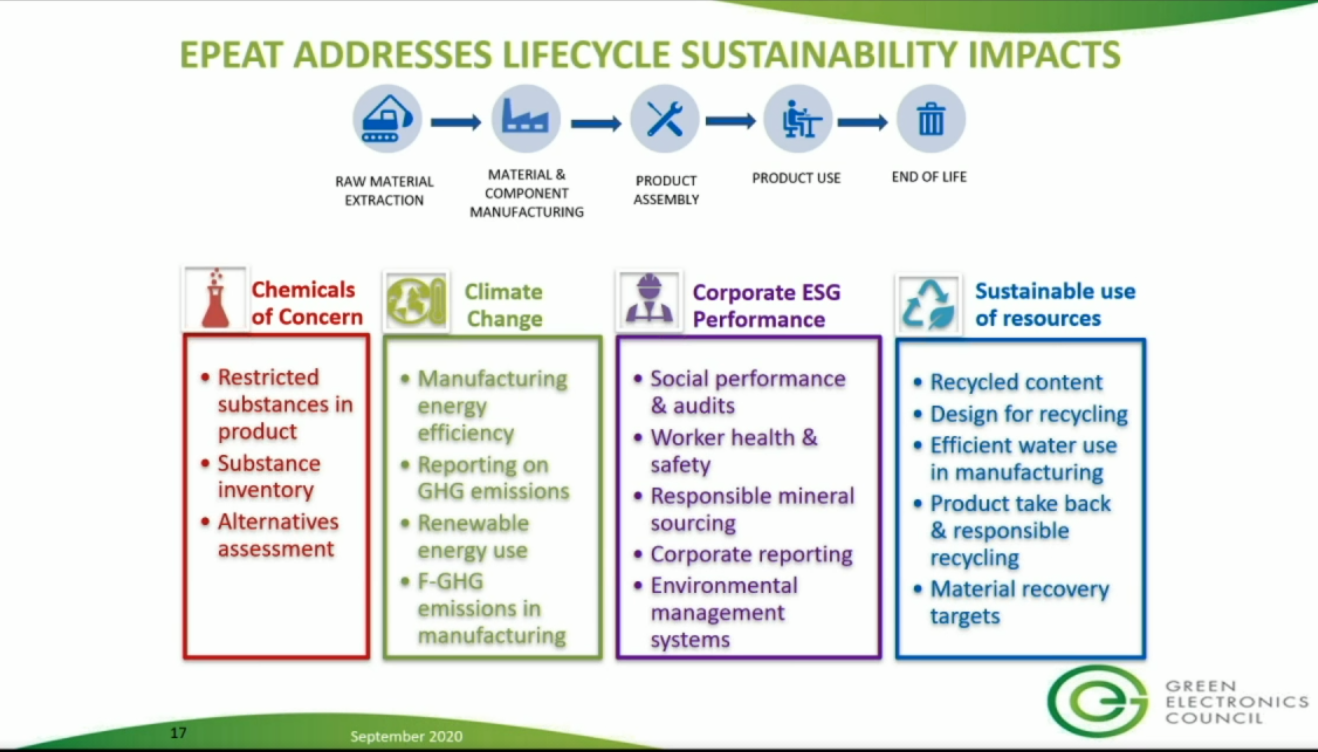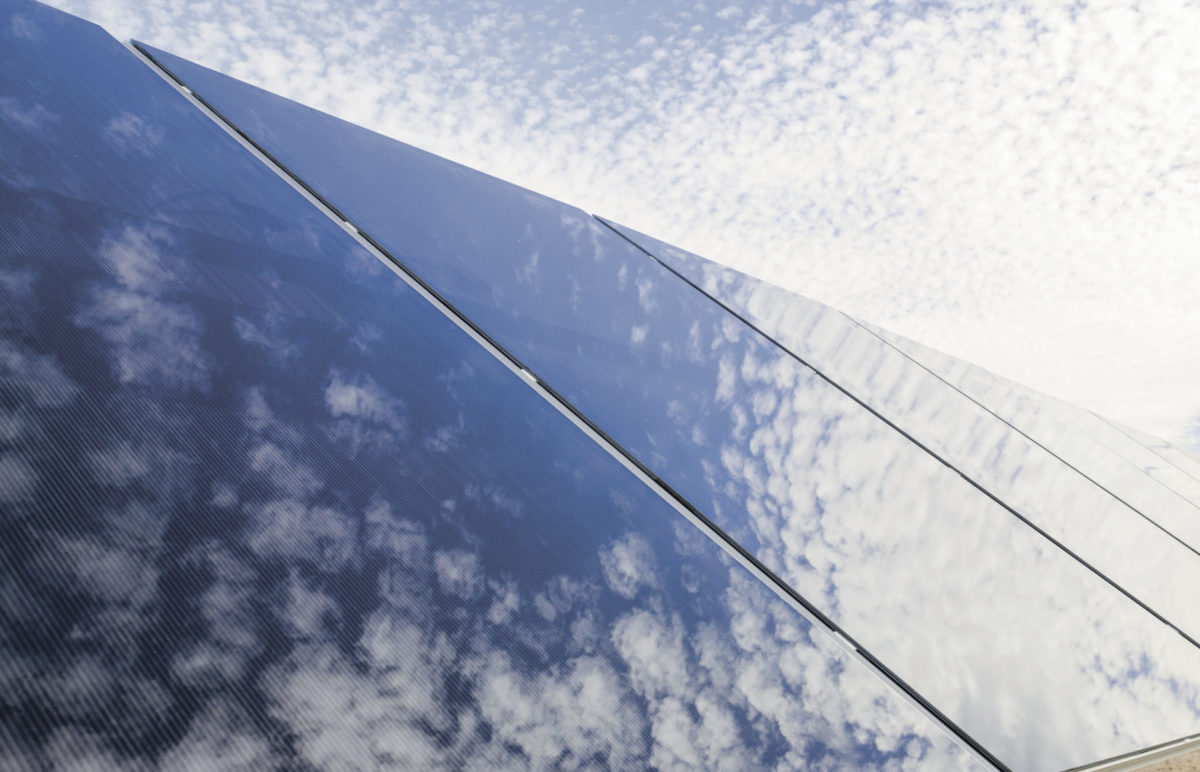Industry body SolarPower Europe kicked off its virtual SolarPower Summit on Monday. Set to run until Friday, the event will address solar-related topics from the state of the industry to financing in a post-subsidy era, green hydrogen, the circular economy and agricultural PV.
With pv magazine’s UP initiative in mind, today’s midday session: Solar, sustainability and the circular economy, was of particular interest. It attracted an impressive panel of experts with differing perspectives. Susannah Wood, marketing director at U.K.-based integrated utility scale solar developer Solarcentury was joined by Nancy Gillis, CEO of the U.S. Green Electronics Council (GEC); Andreas Wade, global sustainability director at U.S. thin film panel maker First Solar; and Fulvia Raffaelli, head of the European Commission's ‘DG GROW' department for growth.
As Wood stated in her opening remarks, while the growth of solar is great, its deployment brings a host of ethical questions related to matters including land use and solar array impacts. While looking at CO2 savings is easy, she said, calculating the impact of construction and hardware installation is trickier. Wood said Solarcentury is midway through the process and working on a three-pronged approach which encompasses defining the scope of emissions then measuring and, finally, reducing them. It has taken the consultancy time, she said, to map its business model against greenhouse gas measurement standards.
Transparent, trusted, open-source
Wood said it is crucial for the industry to address the topic – a sentiment echoed by her fellow panelists – and to prepare for investor scrutiny. In that vein, Wood said it was vital all findings be transparent and made available on an open-source basis to enable the rapid growth of solar.
First Solar’s Wade mentioned the need to focus on life cycle approaches to optimize the performance of modules, inverters and balance-of-system equipment in solar plants, in addition to looking at the development and construction of projects – and issues like land management and biodiversity – through a sustainability lens.
Gillis, from the GEC, underlined how vital it is for the solar industry to ensure it is acting sustainably all the way down to the hardware used. That will support institutional purchasers, banks, investors and the entire tech sector in moving towards a circular economy.
Industry cannot afford to let the environmental impact of PV modules and inverters eclipse the benefits of solar as it replaces fossil fuels, said Gillis. If circularity is not kept in focus, solar modules will become a “significant” part of the e-waste stream. For the past 18 months, the GEC has been working on devising life cycle-based criteria for modules and inverters. Next month, it will launch a new type-1 ecolabel which applies five different categories to modules and inverters (see slide below).

The label, said Gillis, will be independently verified and can be used in many markets. You can read an op-ed by Gillis which was published in the September issue of pv magazine.
Commenting on the GEC's new electronic product environmental assessment tool (EPEAT) label, Wade said First Solar welcomes it and looks forward to becoming one of the first to obtain it and he emphasized the importance of having measurable and comparable metrics. “It is important to have a transparent approach,” he said – verified by an independent third party – so trust can be built.
In an increasingly commoditized market, added Wade, sustainability is one of the key ways manufacturers can differentiate products and add value.
Mixed policy instruments
The European Commission’s Raffaelli discussed the work done in the past three years by the EU's Joint Research Centre (JRC) on applying sustainability-focused policy instruments to solar modules, inverters and systems on the European market. That study is coming to an end and four voluntary and mandatory policy instruments have been identified, said Raffaelli: eco design minimum requirements, energy labeling, ecolabel criteria and green public procurement rules.
Eco design criteria would be applied to modules and inverters, said Raffaelli, while an energy label could apply to installations. The next steps will include a workshop on mandatory eco design and energy labeling policy instruments, and work on potential standardization. The EU is also planning a stakeholder meeting to discuss how such approaches could be designed in the most “efficient and ambitious” way.
The GEC's Gillis, who is also working with the Joint Research Centre, said it is critical to ensure the criteria studied are life cycle based and to push for innovation. That will not only provide a baseline for companies but will allow for growth. To that end, harmonization would be essential, said Gillis, to avoid gains being diffused through confusion over different label or certification types. All the panel members agreed with that sentiment.
First Solar's Wade added, the eco design policy is one of the most effective instruments available and makes sense for modules and inverters. It further allows for differentiation in a crowded marketplace, he said. Meanwhile, energy labels will push the social aspect of informing consumers about their choices and pushing sustainability into a wider mindset.
While she welcomed the EU’s stance on sustainable policy instruments, Solarcentury's Wood – coming at the issue from a developer perspective – was more reserved in her judgement. With equipment purchased mainly from China and the EU and to be used in projects in Latin America, China and Europe, developers are looking for an “easy life,” she said.
Circular manufacturing
Pressure also comes from the banks, another big stakeholder for Solarcentury, added the marketing director. “It will be interesting to see what they say,” said Wood, adding: “Hopefully they will welcome the changes as they have a lot to say in the products we use.”
Wood pointed out the correlation between sustainability and quality, and that over an installation’s lifetime, quality is an important financial factor in terms of both performance and warranty length. Despite that, Wood added, banks can often have such specific requirements, the list of suppliers which can oblige can be significantly narrowed.
The Solarcentury representative said she supported a minimum requirement and optional opportunities for innovation and differentiation between products. With many of the sustainability-focused academic reports published “dense and not supportive,” Wood said SolarPower Europe is playing a leading role in providing more useful information to the industry.
False dichotomy
The GEC's Gillis dubbed the additional costs of added criteria – particularly on sustainability – a “false dichotomy” and said it was “disheartening” to hear people saying sustainable means more expensive, because sustainable criteria address externalities not factored into “regular” products, whose added costs are only considered further down the line.
If costs are looked at from a life cycle perspective and if products are sustainable and efficient, said Gillis, costs will fall. That is not only beneficial for the buyers, the GEC panel member pointed out, but also for “those who live on this single planet.”
The European Commission's Raffaelli agreed the matter was important but emphasized the need to avoid having too many criteria. It is important to stick to the right indicators which can make a substantial change, she said, and then design measures around those, rather than trying to measure everything – a principle Gillis agreed with.
The Green Electronics Council chief executive added, banks and other investors consider criteria other than sustainability, and need to know the quantifiable benefits of their investments. As such, the GEC will establish a benefits calculator committee next year to provide such information.
Steps ahead
Wrapping up the session, the panelists were asked what they believed are the biggest sustainability challenges for the solar industry.
Raffaelli said setting the objectives and providing the right direction for investors, research and industry would be essential. “We need to set a clear direction and mobilize all relevant tools to help that,” she said.
Wood and Wade agreed that while a lot of work has been carried out at a product level – and they were confident work on making hardware more sustainable is on the right path – the broader impact of solar still has to be addressed. That includes land management and social considerations. “We need to take people with us,” said Wood.
This content is protected by copyright and may not be reused. If you want to cooperate with us and would like to reuse some of our content, please contact: editors@pv-magazine.com.




By submitting this form you agree to pv magazine using your data for the purposes of publishing your comment.
Your personal data will only be disclosed or otherwise transmitted to third parties for the purposes of spam filtering or if this is necessary for technical maintenance of the website. Any other transfer to third parties will not take place unless this is justified on the basis of applicable data protection regulations or if pv magazine is legally obliged to do so.
You may revoke this consent at any time with effect for the future, in which case your personal data will be deleted immediately. Otherwise, your data will be deleted if pv magazine has processed your request or the purpose of data storage is fulfilled.
Further information on data privacy can be found in our Data Protection Policy.